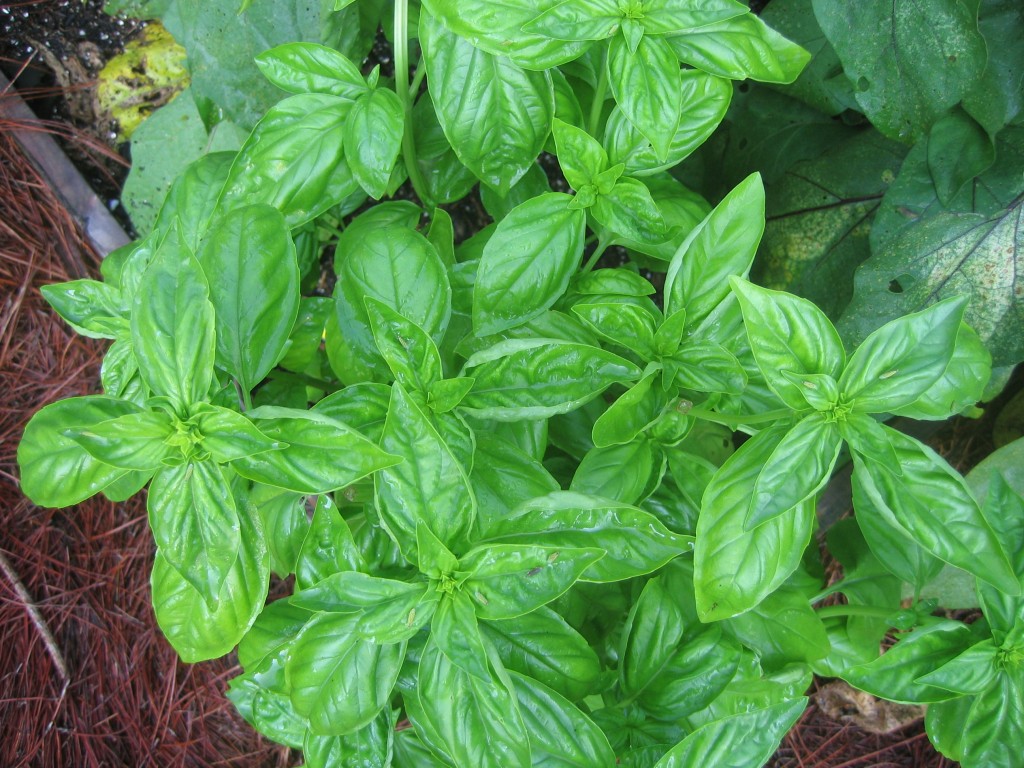
Dear Roundies,
As South Carolina shows its tropical side with muggy mornings and afternoon thunderstorms, our garden is doing well. The eggplants hang like purple comas throughout the garden, suggesting I pause in my daily labor and admire their bold, anime-like color. Most of the lettuce has bolted and is now almost as tall as me. Cucumbers hide their prickly faces behind leaves like an old man pulling the sheets over his face for a nap.
Continue Reading…
Posted 15 years, 11 months ago at 4:46 pm. 1 comment
(This summer, one of my duties as Round River Farms intern is to write a weekly newsletter to our shareholders. I’ll be posting these newsletters here too. So you can eavesdrop even if you can’t enjoy the vegetables I’m growing…)
It’s become a bit of a joke at my house to ask for the full pedigree of any food we eat. Whatever I cook, Gary, my husband, will ask if it’s “organic, local, and grass-fed.” Although it began as genuine delight over the wealth of produce and good quality meats at my farmer’s market, it quickly devolved into something more cynical. Exasperated at once again finding no junk food in the house, Gary asked me when I was going to buy some organic local grass-fed Twinkies. Even as I laughed, his sarcasm made me pause and consider just what all the labels meant anyway?
What is it about “local food” that makes me respond like one of Pavlov’s salivating dogs? Is geographical proximity alone the determining factor? Frito-Lay seems to think so. In May, the company launched a new advertising campaign in which they market their potato chips as “local.” After all, the potatoes they use have to be grown somewhere, right? And that somewhere has to be local to someone, right? So, potato chips could be a guilt-free local snack…as long as you’re lucky enough to live near a Lay’s potato farm.
Bi-Lo is trying to cash in on the local concept too. As I was walking out of Bi-Lo the other day, I noticed a banner advertising “Walter’s Local Produce.” The banner seems to shout the question: Who in the world is Walter anyway? A quick search of their website reveals that Walter is Bi-Lo’s deified produce manager. Walter, it turns out, is the one responsible for the fates of all the little fruits and vegetables that roll around your cart. Although he is revered for his pickiness over produce, there is little else said about him. The most personal thing on the page is a photograph of a disembodied hand. I left the site wondering if “Walter” really existed, or if he was just a corporate cardboard cut-out. No doubt, the brand “Walter’s Produce” is meant to evoke the feeling you are buying your apples and broccoli from a roadside stand owned by a man named Walter. Is that what makes food local then? Knowing that some kindly produce manager in the sky is triple checking your bananas for bruised spots?
Clearly, neither of these companies really gets it. “Local” has become shorthand for something much more complex than geography. I’ve come to the tentative conclusion that “local” has something to do with the community of people surrounding our food. I think Erin Barnett, the editor of Local Harvest, is on to something when she says that local food is “food we know in our bellies we can trust.” In the world of modern foods with ingredient labels that sound like a grocery list from Mars, trust seems to be on back order. Not only have we lost a sense of where our food comes from, but also who it comes from. Local food, on the other hand, has a history that can be known. You can come see your peas and cucumbers hanging on the vine, run your fingers through the dirt they grow in, and even harvest them yourself. Even more than that, it’s possible to get to know the people growing your food. Your brain, your heart, and your belly can trust true local food.
I’d like this newsletter to help grow that trust this season. In future letters, I’d like to tell you the story of the vegetables in your share each week, including growing conditions, nutritional information, storage tips, and recipes. More importantly, I’d like to use this newsletter for us to get to know each other better. Please feel free to leave comments – your thoughts on what I’ve written, questions about the vegetables in your share, tips on how to use up all that zucchini, ect. So, you can snap those peas and chop those tomatoes, knowing that you can trust where (and who) they came from . . . and that there are others snapping and chopping right along with you.
Eat Well,
Jana
Posted 15 years, 12 months ago at 11:02 am. 2 comments
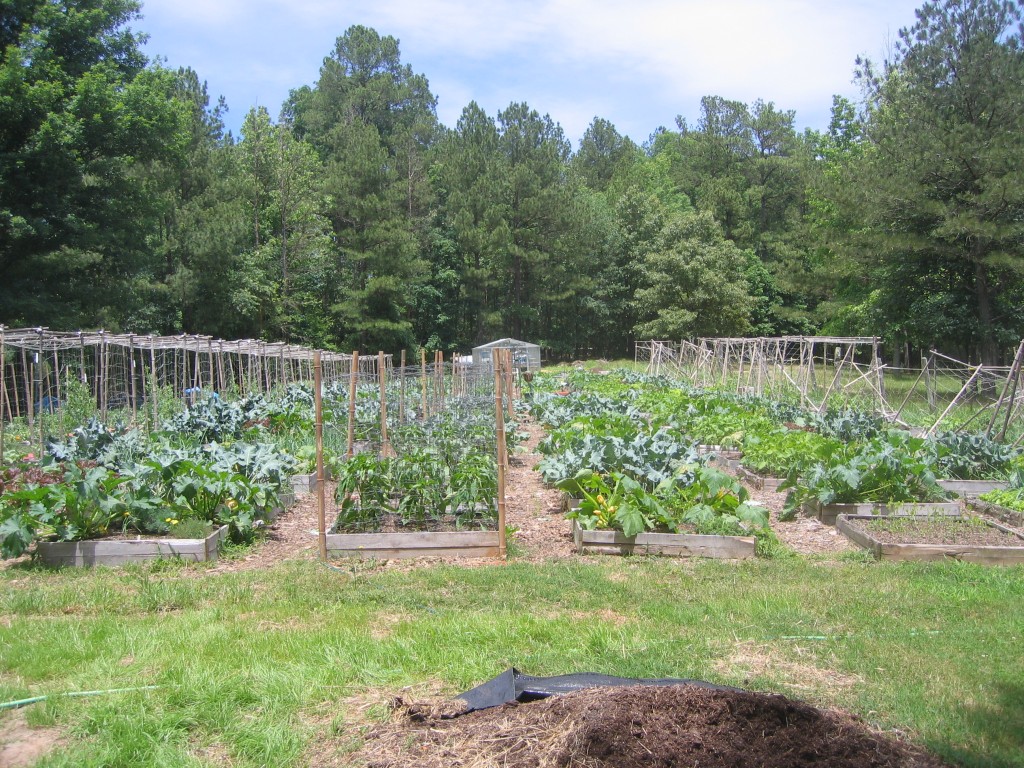
Welcome to Round River Farms! The garden is built on the “square-foot” system. Each box has several different vegetables growing in it. In the back, near the middle, is the greenhouse where all the seedlings were born. One of my first jobs is to fix the broken trellises on the right.
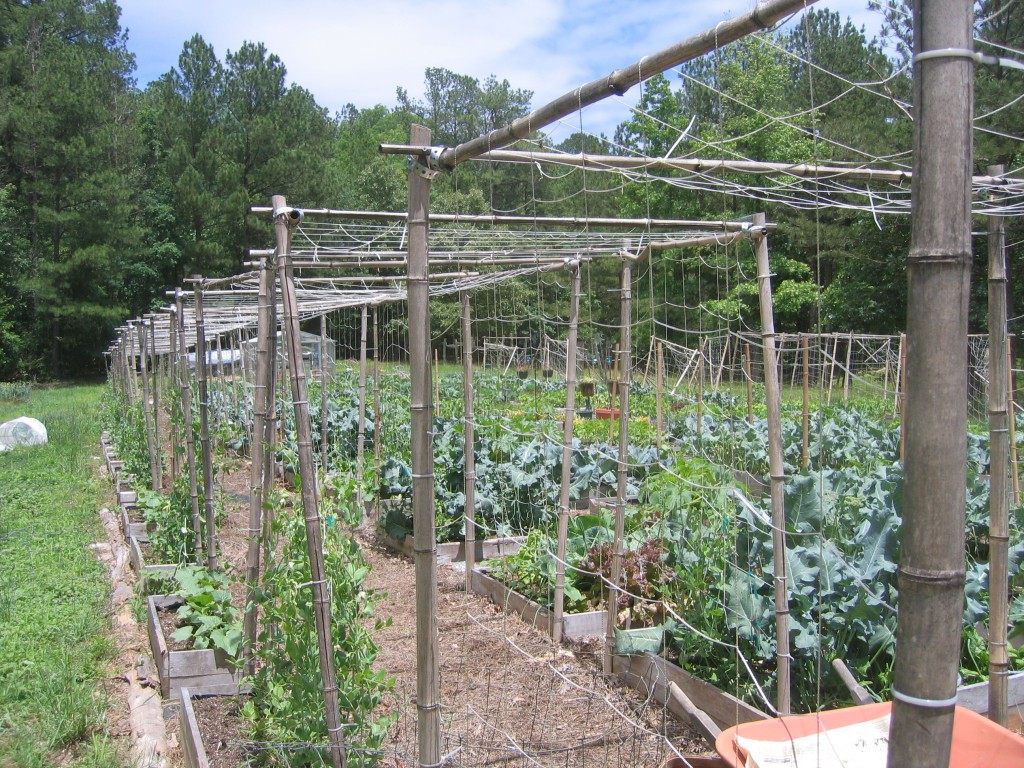
This is what the trellises are supposed to look like. They’re made out of bamboo. Eventually, when the peas and tomatoes have climbed up them, I think they’ll make a really cool tunnel – perfect for a romantic interlude.
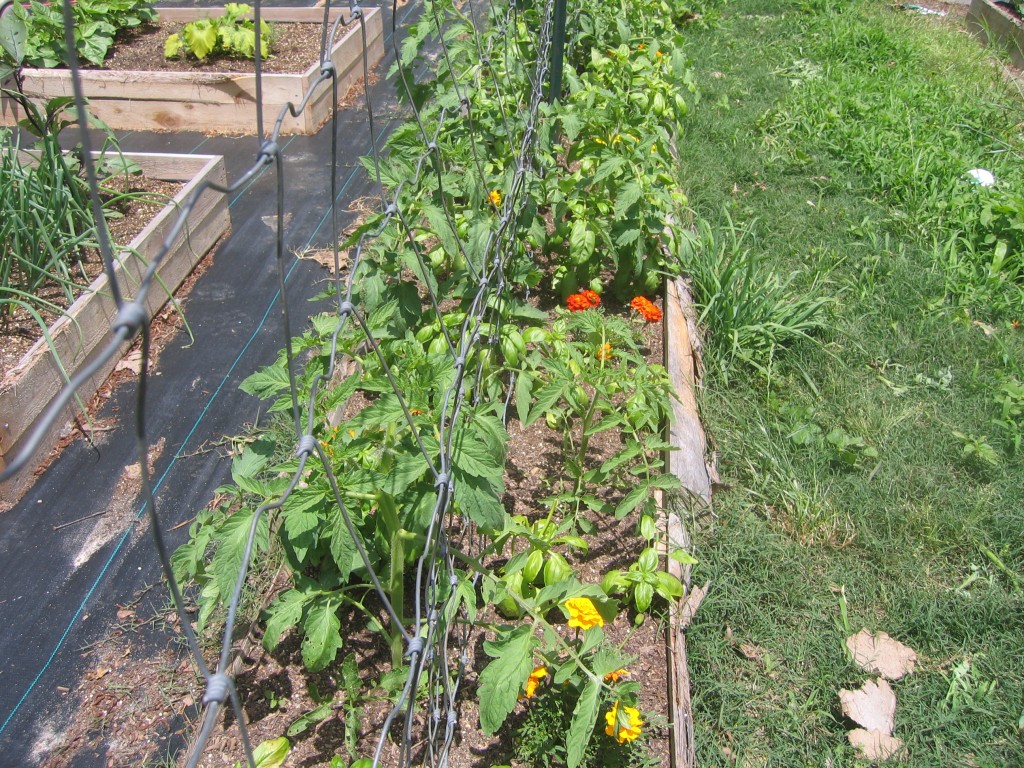
A typical garden box- tomato plants, basil, and marigolds. We also are growing squash, cucumber, eggplant, lettuces, dill, sage, lemon balm, onions, soybeans, collards, potatoes, and probably some other vegetables I forgot.
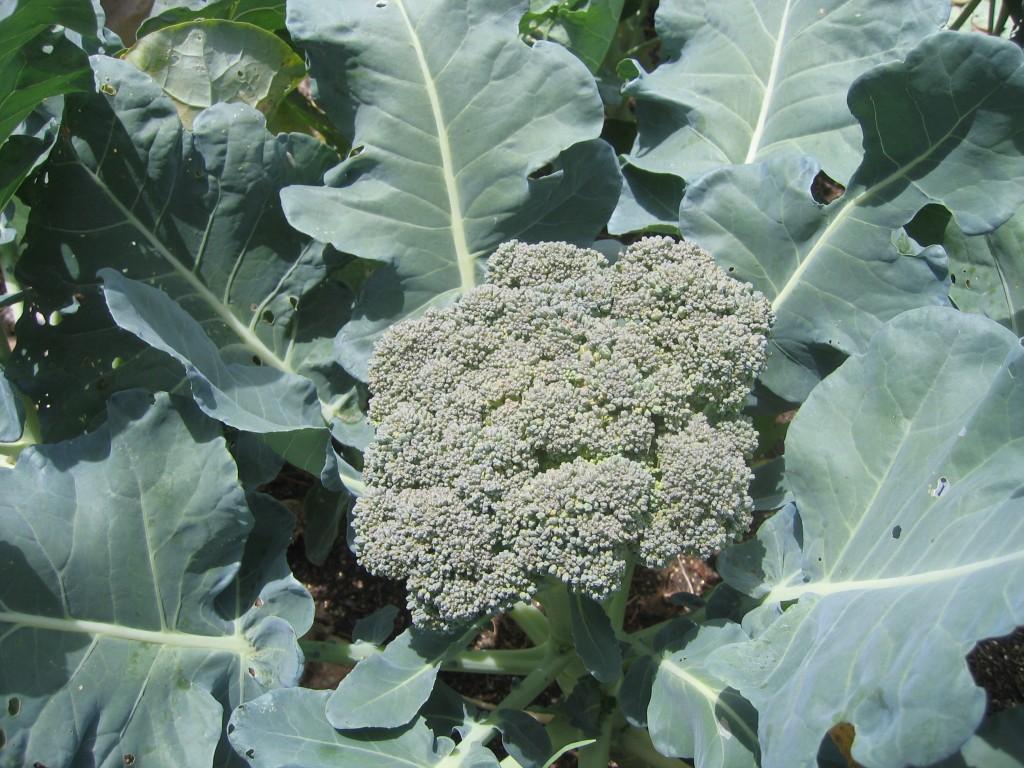
This is some broccoli I planted several months during my interview. It’s proof that I must have at least a little green thumb in my blood.
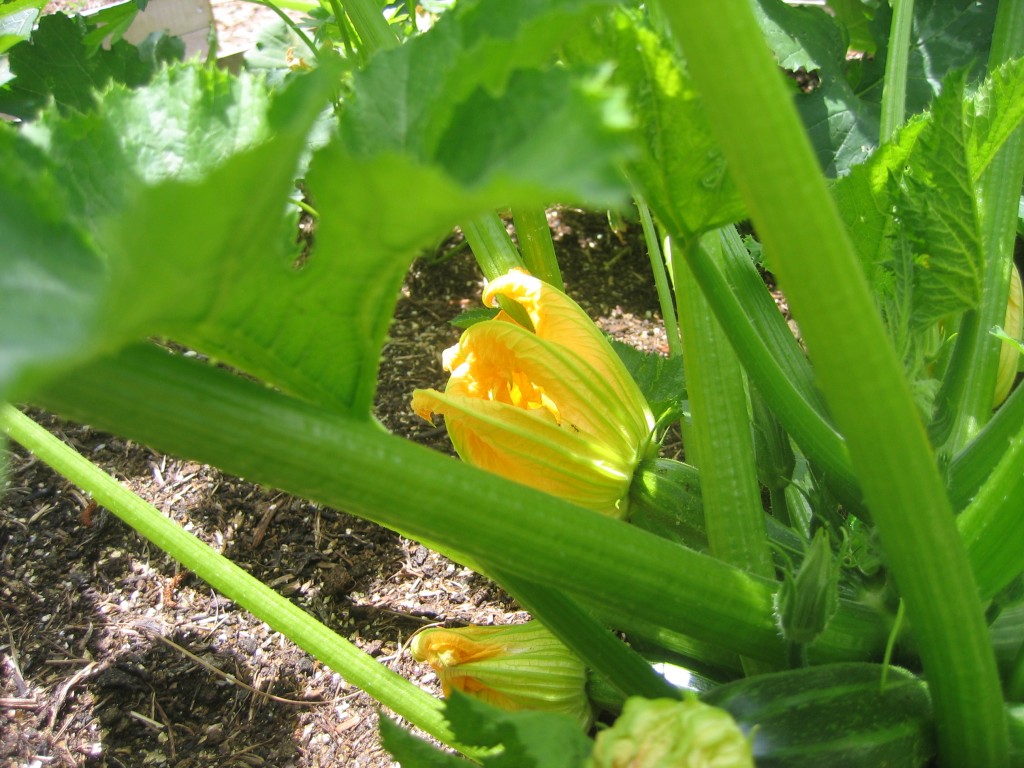
A squash blossom. At the bottom you can see the blossom growing into a cucumber.
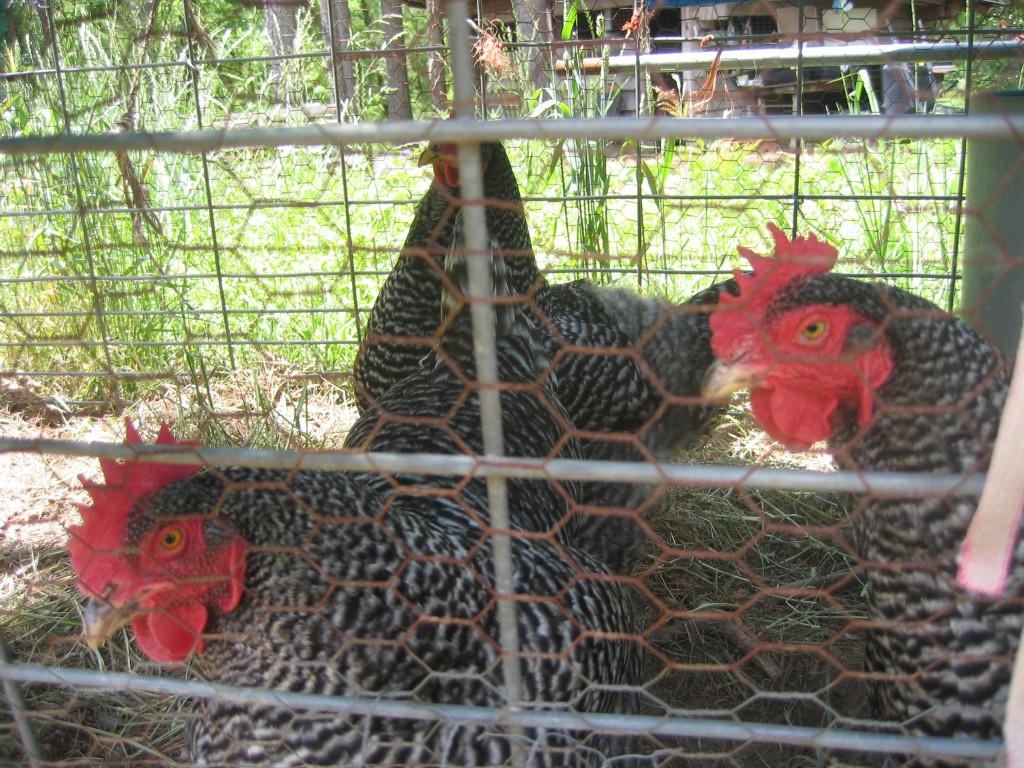
My chicken friends.
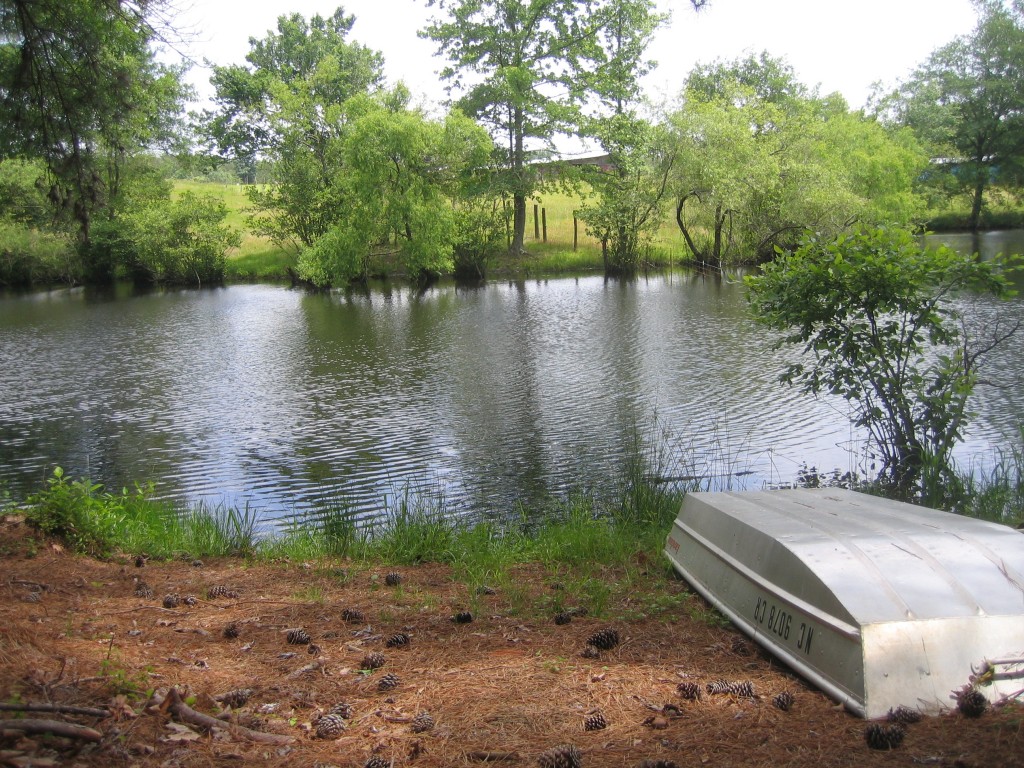
The pond across from the garden. Very Zennish, isn’t it?
Posted 16 years ago at 8:03 pm. Add a comment








